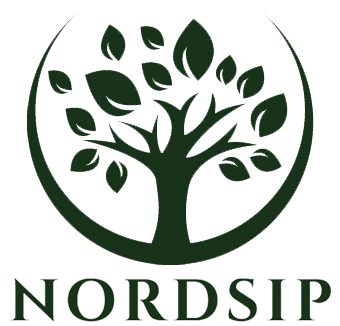Stockholm (NordSIP) – As sustainable investments face increasing opposition, especially following last year’s U.S. elections, it’s becoming more critical for asset managers to understand and meet the demands of sustainable asset owners. Currently, the Nordic region remains a haven for sustainability commitments, drawing asset managers eager to make a positive impact on people and the planet.
To gain insights into how to approach asset owners, particularly in the Nordic countries, NordSIP spoke with Vuk Srdanovic, a former professional at Triodos Investment Management and Bankers Without Boundaries, and an experienced sales leader in the Nordic region.
Technical Constraints
Srdanovic emphasises that asset managers must prioritise clarity and transparency from the outset. “Asset managers need to be very clear and transparent about their investment strategies when engaging with institutional investors. This includes standard financial metrics related to expected returns and risk exposure, but it also extends to sustainability disclosures regarding the investment vehicle’s sustainability profile,” he explains to NordSIP.
While many sustainability professionals would stop at this point, Srdanovic delves into further technical considerations. “Investment philosophy and process are not the only factors determining whether a product appeals to asset owners. Institutional investors often have specific technical constraints built into their mandates, ensuring investments align with their liability obligations,” he adds.
A key challenge for insurance and pension funds lies in the need for diversification and low volatility. This dynamic leads institutional investors to favor larger strategies and funds due to natural and regulatory biases.
Scale, Structure, Track Record and Consistency
“Large institutional investors prefer not to have concentrated portfolios exposed to systemic risk. They seek diversified portfolios where possible. As a result, most of their mandates prohibit investments representing more than 10% of any single fund,” says Srdanovic. Fund scale is therefore essential. “Participation in an investment strategy requires costly due diligence and monitoring processes on the part of asset owners. The investment opportunities must justify these sunk costs,” he states.
“Scale matters. If an asset owner is trying to sell a standard equity UCITS fund to institutional investors, that fund should ideally be at least €100 million. This is because an institutional investor cannot own more than 10% of a fund—around €10 million, for example. Below this threshold, many institutional investors would not find it worthwhile to conduct the necessary due diligence,” he adds.
Finally, institutional investors value a clear track record. “Consistency in investment processes, philosophy, and structure matters because institutional investors seek continuity in their investments. They are unlikely to invest in a fund with less than three years of track record or with a team of portfolio managers that has changed within the past three years. Empirical data always trumps theoretical predictions of performance and risk,” Srdanovic argues.
Similar but Distinct: Nordic Markets and Brand Recognition
Turning to the Nordic region, Srdanovic observes that Denmark, Finland, Norway, and Sweden share clear similarities that justify grouping them together. “Nordic countries are widely seen as wealthy, efficient, and accountable, with low corruption, well-educated populations, high trust in public institutions, and a strong commitment to environmental conservation,” he explains.
“People in these countries are highly informed about sustainability and have strong opinions about how they want to invest. Pension funds here aren’t in the business of educating clients but rather providing sustainable investment options. Pension providers that fail to offer sustainable products will struggle to attract young savers,” Srdanovic adds.
However, the differences between Nordic countries require asset managers to adjust their approach. “The Swedish market is dominated by equity investments, and online retail investment platforms, like Avanza and NordNet, are popular. Denmark, on the other hand, is still a fixed-income-dominated market with limited investment platforms. Norway has a few large players and, due to its geography, several local savings banks. In Finland, large institutional investors with a preference for equities dominate the market,” Srdanovic explains.
Another challenge for foreign asset managers is the lack of brand recognition. “The Nordic market, like most, is dominated by a few large financial operators, making it difficult for outsiders to enter without brand recognition. Partnerships are key to raising an asset manager’s profile. Collaborating with local fund selectors or distributors and offering products on their platforms can be crucial for success,” Srdanovic advises.
The Future of Sustainability – Awareness and Growth
Despite political shifts, Srdanovic believes awareness of sustainability will continue to grow. “It is unreasonable to ignore sustainability factors in investments, especially since many of them are material to the performance and risk of investments,” he argues.
“The transition we’ve seen over the past five years—particularly in sustainable energy, food, resources, and biodiversity—is here to stay. Natural capital has become an increasingly important asset theme. The market is maturing, and there seems to be a shift toward balancing risk management with the opportunity to protect biodiversity and natural resources while improving revenue and performance,” Srdanovic adds.
Srdanovic also highlights the importance of regulatory clarity in this sustainable future. “Regulators must clarify the different types of investments and their sustainability features. A fund classified under Article 6 of the EU’s Sustainable Finance Disclosures Regulation (SFDR) doesn’t contribute much to sustainability—its focus is on short-term profit. In contrast, Article 8 and 9 funds aim to make a difference. Regulators must ensure asset managers disclose this information in a clear, accurate, and meaningful way for prospective investors,” he concludes.



